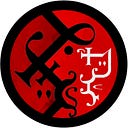Beasts’ Nations — Anapat
Anapat is one of the four Beasts’ Nations. It is a land of war and trading, ruled by the Minotaur King and full of stark contrasts, hosting both the most populous and busiest city of all nations and its emptiest and most derelict territory.
Anapat’s history has been shaped by its border with the Empire and the cyclical conquest and defense of Arevi, the contested lands south of the river Bazhanum. For the last 40 years, Arevi has been under the control of the Principality of Erebos with the name of Traurides, but the beast folk are not ready to concede what they see as part of their ancestral land.
The Minotaur dynasty was at the forefront of the Independence War of the early VI century against the Holy Infernal Empire but its relationship with the Devils is not of simple antagonism. Having been the nation geographically nearest the Empire, Anapat, and its ruling class, are also the closest culturally, especially to the nearby Erebos. From trivial things such as the love of fighting sports or the ubiquity of spicy food to the most substantial ideas about the role of aristocracy and military structure, Minotaur nobles have (unwittingly) shaped their land as the mirror of their enemy. The proof of that is the various attempts of the Minotaurs to unite the Beasts’ Nations under a common institution: an empire in all senses but the name.
Minotaurs are the majority of the aristocracy and the people, but not overwhelmingly: the ethnic composition is quite varied, with even a human minority. The capital city, Getaberan, it’s the commercial hub for all nations and has a cosmopolitan and multicultural population, with even small enclaves of Uxali Beast folk. Anapat is well known for its crafting, especially its metalworks, among which, unsurprisingly, weaponsmithing has a major role.
Half of Anapat is occupied by the Hades Badlands, a piece of Hell in which everything (substance, shapes, thoughts) is slowly erased. This land has been the ultimate barrier against any attempted invasion by Erebos and, despite being a hostile and uncharitable place it’s the heart of Anapat (a word that means, in fact, “empty wilderness”).
Marriage is a bond that unites, both on a sentimental and personal level and a more pragmatic one. Joining families through marriage has always been a powerful tool to cement alliances and merge estates, not only in the present but for future generations as well. And that’s always been a problem for the Beast Folks.
The various beast lineages are not biologically compatible: Felinars, Tengus, Nagas, and Minotaurs can’t breed with each other. Furthermore, they aren’t really attracted to each other, as there is a congenital predilection for people of the same species and a repulsion for others, at least romantically.
This doesn’t mean that there aren’t long and affectionate relationships between members of different lineages, but they are always platonic and rarely exclusive. Friendship is central to the Beasts’ Nation culture: ideas like “meeting of differences”, “elective affinities”, and “kinship by choice” are the basis of the collaboration among the different species. Friendships are openly celebrated: even grown men exchange brooches or bracelets as a token of friendly affection, something that appears puerile and oversentimental to outsiders.
Institutions recognize “non-familial bonds” as well: Beasts’ jurisprudence, for example, has many tools to factor in long-time friends in matters of inheritance
But blood is thicker than water, at least when nobility is concerned.
Joining two noble houses can’t be made just with ordinary contracts, it needs an aura of sacrality. So they created the “wide wedding”: in this marriage “variant” two people of different lineages are wed, but it’s also understood they will have “shadow consorts” that will give them children. Any child conceived with one of these consorts will be automatically legitimized by the official spouse and treated as his or hers, while the “actual” parents lose any rights or obligations.
This is the current situation of the Minotaur King, Bakhtavor I of house Ts’ul, who married Shushan, a member of felinar royalty, to bring nearer the nations of Anapat and Antarr.
